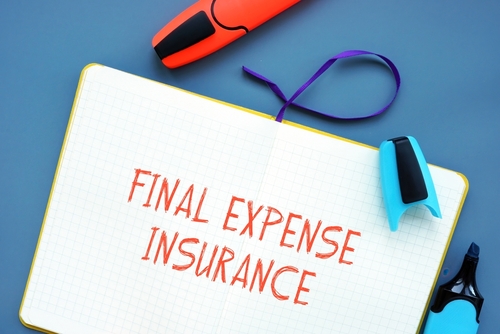Rumored Buzz on Pacific Prime
Rumored Buzz on Pacific Prime
Blog Article
Fascination About Pacific Prime
Table of ContentsNot known Incorrect Statements About Pacific Prime 3 Simple Techniques For Pacific PrimeRumored Buzz on Pacific Prime7 Easy Facts About Pacific Prime Shown
In most states, the insurer is required to send you a copy of the adjustments to your plan. It is vital that you check out Recommendations or Riders so you understand just how your plan has changed and if the plan is still appropriate to meet your requirements. To obtain a copy of your insurance coverage policy, please call your insurance representative or firm.
The Institute of Medicine (IOM) Committee on the Consequences of Uninsurance launches an extensive evaluation of proof that addresses the significance of health insurance policy protection with the publication of this record. Insurance coverage Issues is the initial in a collection of six reports that will be released over the following 2 years recording the truth and effects of having an approximated 40 million individuals in the USA without medical insurance coverage.

Some Known Details About Pacific Prime
The goal of this collection of studies is to refocus plan focus on a historical issue. Complying with the longest financial growth in American history, in 1999, an approximated one out of every six Americans32 million adults under the age of 65 and more than 10 million childrenremains without insurance (Mills, 2000).

Ten percent of the population make up 70 percent of healthcare expenses, a connection that has remained constant over the past three decades (Berk and Monheit, 2001) - global health insurance. Thus medical insurance proceeds to offer the function of spreading danger even as it significantly funds regular care. From the perspective of wellness treatment companies, insurance brought by their clients aids protect a profits stream, and communities gain from economically viable and steady healthcare specialists and organizations
Federal government provides medical insurance to populations whom the private market may not offer efficiently, such as handicapped and seniors, and populations whose accessibility to health and wellness treatment is socially valued, such as children and expecting women. The ultimate ends of health insurance protection for the private and communities, consisting of work environment areas of staff members and companies, are improved health and wellness results and lifestyle.
The 6-Second Trick For Pacific Prime
Staff members rank medical insurance first by much in importance amongst all the advantages provided in the work environment (Salisbury, 2001). There have been substantial financial investments of individual and public funds to supply health insurance, many individuals still have no protection. In spite of substantial reporting of survey findings and healthcare research results, the basic public continues to be overwhelmed and mistaken concerning Americans without medical insurance and the effects of lacking coverage.

Without question, the complexity of American wellness care financing devices and the wide range of sources of details include to the public's complication and hesitation concerning health and wellness insurance policy stats and their analysis. This record and those that will adhere to goal to boil down and provide in readily reasonable terms the comprehensive research study that bears on inquiries of medical insurance coverage and its value.
Fifty-seven percent of Americans surveyed in 1999 believed that those without medical insurance are "able to obtain the care they require from physicians and hospitals" (Blendon et al., 1999, p. 207). In 1993, read what he said when national attention was concentrated on the issues of the uninsured and on pending health care regulation, simply 43 percent of those questioned held this belief (Blendon et al., 1999).

They also receive fewer precautionary solutions and are much less likely to have normal take care of chronic conditions such as high blood pressure and diabetic issues. Persistent diseases can result in expensive and disabling problems if they are not well handled (Lurie et al., 1984; Lurie et al., 1986; Ayanian et al., 2000). One national survey asked greater than 3,400 adults concerning 15 highly severe or dark conditions.
The 7-Minute Rule for Pacific Prime
Extra proof is provided later in this phase in the conversation of insurance and access to healthcare. https://pastebin.com/u/pacificpr1me. Individuals without health and wellness insurance policy are young and healthy and balanced and pick to do without protection. Virtually half (43 percent) of those evaluated in 2000 thought that individuals without health insurance coverage are most likely to have wellness problems than people with insurance coverage
Citizens and plan makers in emphasis team conversations define those without insurance as youngsters who have the chance to be covered and feel they do not require it (Porter Novelli, 2001). Contrasted to those with at least some personal protection, the without insurance are much less likely to report being in exceptional or excellent wellness (Company for Healthcare Research and Top Quality, 2001).
RESOURCE: Facility for Cost and Funding Studies, Agency for Medical Care Study and Top quality, based on MEPS information. Youthful adults between 19 and 34 are much more likely to do not have medical insurance than any kind of other age. This is primarily since they are much less commonly eligible for employment-based insurance policy as a result of the nature of their task or their brief period in it.
The assumption that people without insurance have better-than-average health and wellness complies with from perplexing the relatively young age profile of the uninsured with the much better health, generally, of younger persons. This covers the web link between health status and health and wellness insurance. For those without accessibility to work environment medical insurance, poor health and wellness is a potential barrier to buying nongroup protection because such protection might be highly valued, exclude pre-existing conditions, or be simply not available.
Report this page